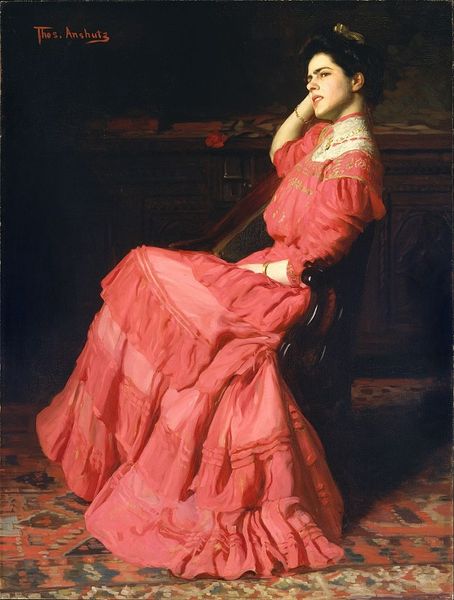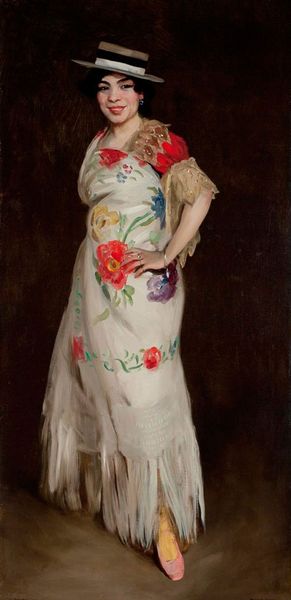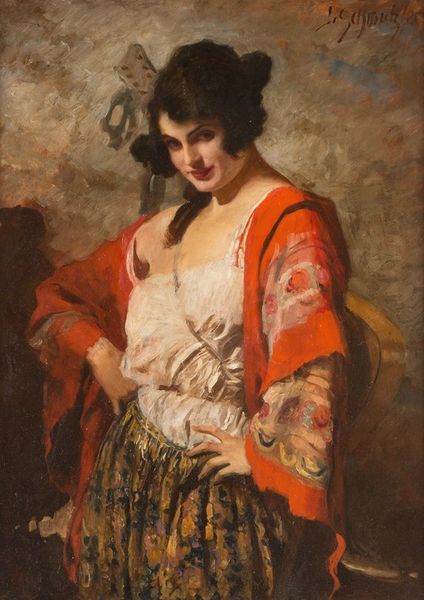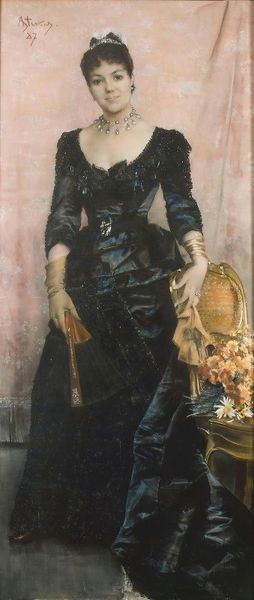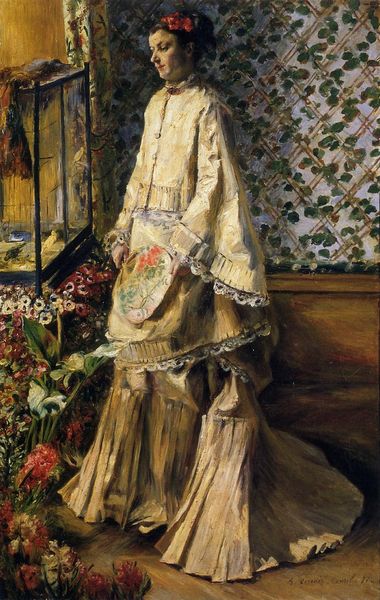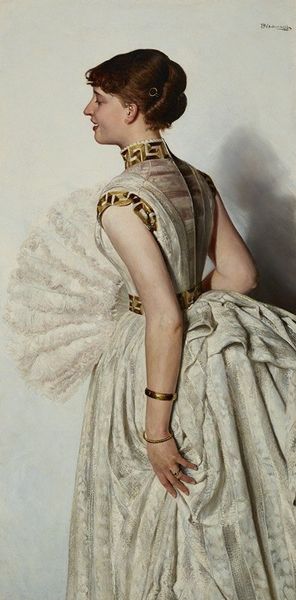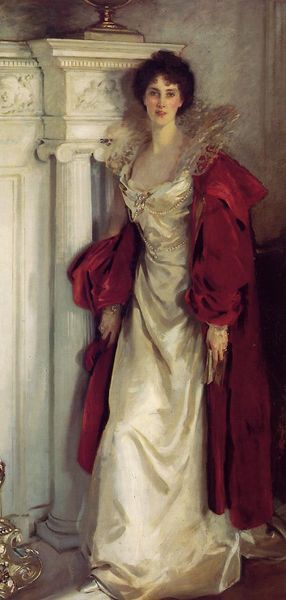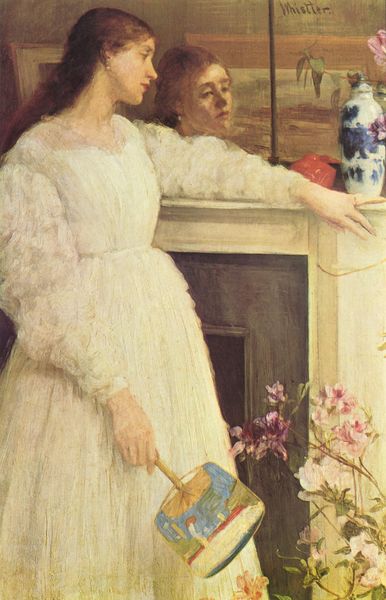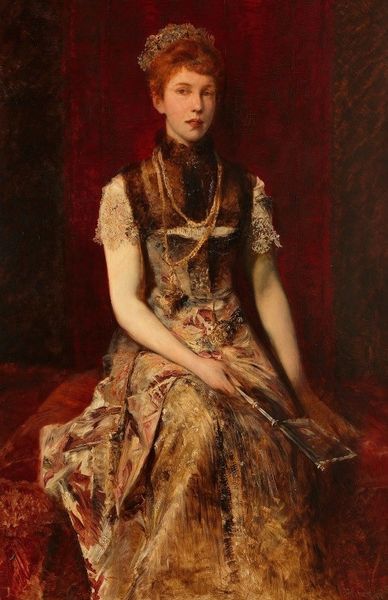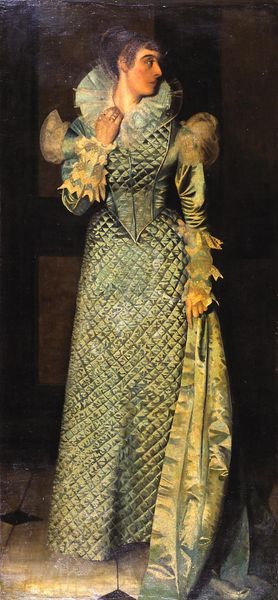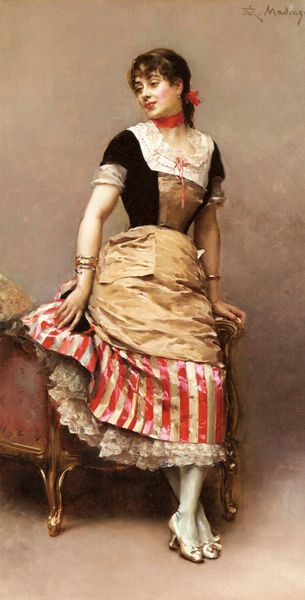
Copyright: Public domain
Curator: Thomas Pollock Anshutz's oil painting, "Portrait of Rebecca H. Whelan," dating from 1910, presents a fascinating study in early 20th-century American portraiture. Editor: Immediately, I’m struck by the textures. Look at that elaborate red and white dress contrasted with the subdued background and that curious black fan. What were the textiles of the period like? Curator: Precisely. The gown dominates visually. Its intricate pattern and vibrant color disrupt what otherwise might be a fairly conventional composition, even pushing against the strictures of Academic Art, and aligning the painting with broader trends in Realism and Impressionism. Editor: That lacework looks incredibly labor-intensive. Who was producing such finery, and under what conditions? This painting begs to ask: where does craft end and art begin? Curator: An insightful point. And that brings us back to the figure of Rebecca Whelan herself. The artist employs a high degree of detail in her face, lending a subtle sense of psychological depth. Consider the interplay of light and shadow, subtly sculpting the contours of her face and neck. Editor: But her posture is peculiar, almost as though she’s caught in an unguarded moment. This painting almost has an air of informality you see in intimism. The context of dress production seems central here. Curator: Anshutz, though working within established conventions, was interested in subtly unsettling them. The asymmetrical pose, the way she gazes just slightly off-center... These create a captivating tension. This artwork balances convention and subversion. Editor: Thinking about materiality gives us insight into the broader social context, who got to enjoy leisure time, and the role that clothing played in delineating social classes. Curator: Ultimately, it prompts us to consider how we understand our own era through the lens of portraiture, questioning how identity is not just presented, but constructed through deliberate choices of form and detail. Editor: Yes. And to realize the extent to which the stories of unseen hands of production also are etched on every piece of visual art.
Comments
No comments
Be the first to comment and join the conversation on the ultimate creative platform.
